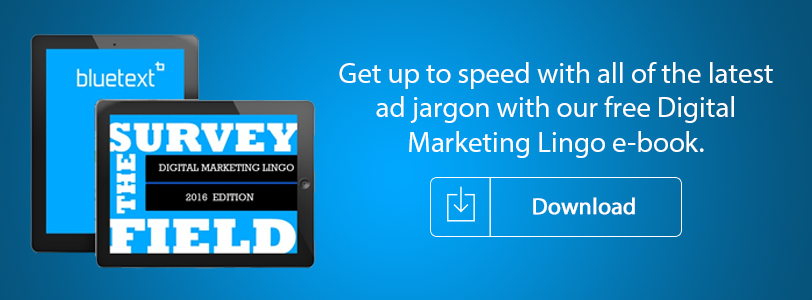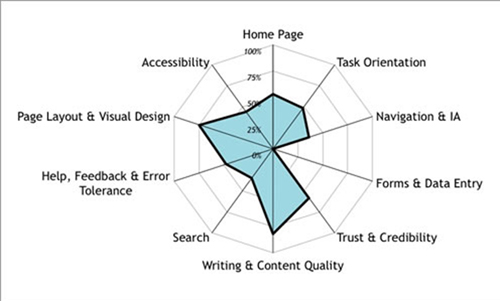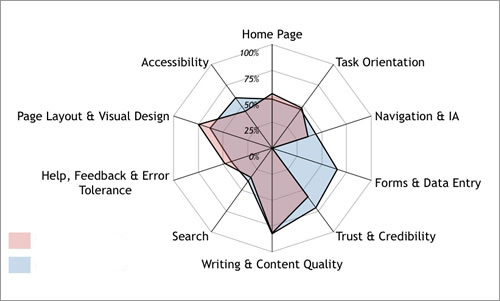Today’s landscape requires the need for constant database care and feeding…smart marketing campaigns, hyper targeted, very personalized, with highly engaging and rich creative presentation. Spray and pray marketing tactics have not worked for quite some time, and just trying to mimic the new hot buzz wordy marketing approach doesn’t also pay off as well as a thoughtful, disciplined and collaborative developed marketing strategy between a client and its marketing agency. So where does the” certified” and the “vegetarian” come in?
Vegetarian Marketers love TOFU. That’s their meat!
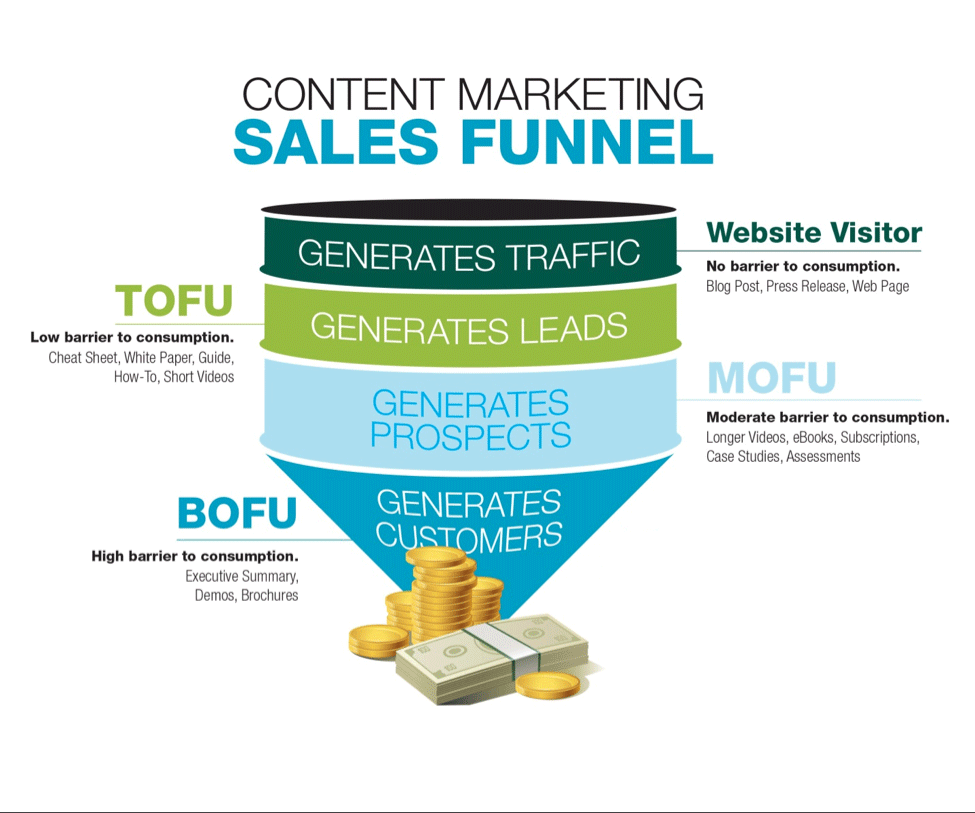
What’s TOFU?
Top of Funnel focused marketing activities.
Or better defined.
Good top of the funnel content marketing serves to commence a relationship (by way of opt-in) with a prospect visiting your site who otherwise might leave without making contact
Here are the key questions you should ask when putting together top of the funnel content.
- Does this intersect my prospects’ information journey at the right point?
- Does this look to take control of the information journey thereafter?
- Is this too obviously marketing?
- Have I considered what else I’ll back up this content with?
Why TOFU (Top of Funnel)?
There is no middle of the funnel or bottom of the funnel without the top of the sales funnel. The challenges brands experience in the middle of the funnel usually fall into one of two areas. The first area is non-opportunities. These are the “deals” that aren’t qualified opportunities at all. The second group is stalled opportunities. These opportunities are usually missing some of the commitments necessary to move them forward internally. The end of the funnel problems are usually around capturing value. But top of the funnel problems are far trickier. Think about how a funnel works. If you feed it in dribs and drabs you get dribs and drabs out of the other end. But if you keep a nice steady stream pouring into the funnel, you get a nice steady stream out of the skinny end.
Make a long story short. Worry first—and most—about the top of the sales funnel.
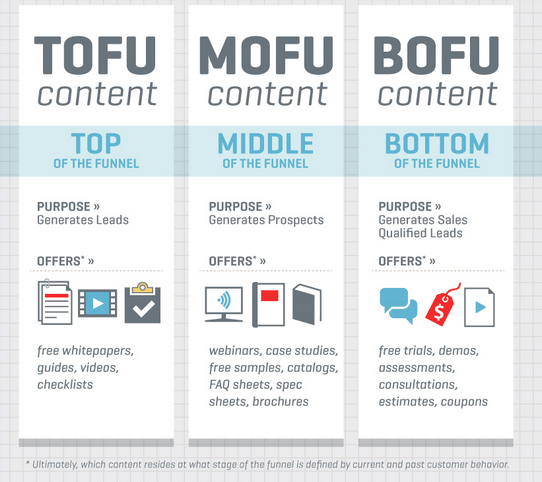
Now for the “certified” part of the equation
Bluetext works with many marketing automation and CRM systems, including Eloqua, Hubpost, Marketo, Pardot, and Salesforce – integrating, configuring, pushing creative through them, optimizing with them. These tools are the personalization marketing brain and the central data hub of value that all of our blood, sweat and tears deliver for our clients every day.
Bluetext is proud to announce we have expanded our credentials by being named a certified Hubspot agency.

Why work with an agency that has certified credentials versus a lot of lip service?
There are a lot of agencies that offer marketing automation services, but not all of them have the appropriate certifications. For organizations looking to partner with an agency to help them with their marketing automation readiness and implementation it is important to verify that an agency has the expertise to do so. A HubSpot Certified Agency Partner provides validation of the depth of an agency’s inbound expertise.
Bluetext delivers innovative content marketing campaigns for many consumer brands like Google, WeatherBug and SoundExchange. Contact Bluetext to learn how we can build your sales funnel with innovative digital content marketing services.
With competitive global markets, what makes your brand different from your competitors?
Sometimes, it takes market research to identify what makes you unique and what’s really important to your target customers. Fill out the form to download Bluetext’s Market Research Primer so you can understand how to:
- Leverage research to craft a market message
- Develop a positioning strategy
- Stand out from the crowd
Download the Market Research Primer to get ahead of the competition here!
Sometimes it seems as if marketers are speaking their own language when you try to engage them in a Virtual Reality project to support your marketing, branding, or communications goals. From HMD to FOV to Judder, Virtual Reality jargon can be confusing. Whether a Google Cardboard project for your campaign or a high-end Oculus Rift project for a special event, it requires a solid collection of new terminology specific to VR technology. To help demystify some of the most commonly used Virtual Reality terminology so you can have a savvy discussion with your in-house engineers, agency folks or freelance consultants, we’ve put together this VR glossary.
Are you feeling out of touch with the latest cybersecurity marketing jargon and worried that your boss might catch on? In the digital age, cybersecurity marketers, companies and thought leaders are constantly introducing new ideas, solutions and technologies that can be impossible to keep up with. From the top down, companies need to be familiar with critical concepts like Sandboxing, Phishing, Patching and Malware, not only so they can keep up with the evolving conversation, but so they can adapt to protect themselves and their customers from cyber threats and breaches. To ensure you’re up to speed with latest and greatest in the world of cybersecurity marketing, we’ve put together a comprehensive Cybersecurity Lingo glossary. Don’t get left out of the conversation.

Do you have the feeling you’re falling out of touch with the latest technology marketing jargon and worried that your co-workers and bosses might catch on? In today’s ever-changing digital marketing industry, professional marketers, companies and thought leaders are constantly introducing new ideas, concepts and technologies, changing the way companies approach digital marketing. Effective web design is becoming increasingly crucial and concepts such as Adaptive vs. Responsive Response, CSS, AJAX and Javascript are becoming more critical to understand. To ensure you’re up to speed with latest and greatest in the world of technology marketing, we’ve created a Technology Marketing Lingo glossary. Make sure you’re not left out of the conversation.

Innovations in real estate marketing can help drive a company’s ability to hit their desired Key Performance Indicators. Through Bluetext’s experience working with top real estate brands like JLL and Kettler we understand what drives integrated marketing and digital marketing results.
SPEED
Faster websites make more money for their companies. Fast includes how long it takes your real estate website to load, but also how long it takes the real estate website search engine to show the user the type of available product that matches their search. Some sites use real time API calls and tons of third-party data services that bog down a search performance. This performance hit hurts seo, conversion, and engagement metrics. The bottom line is performance matters. The relationship between performance and revenue has been shown over and over again. Here are just a few examples:
- Amazon loses 1% of sales for every 100ms it takes their site to load.
- Shopzilla reduced their loading time from 7 seconds to 2. This performance boost resulted in a 25% increase in pageviews and a 9.5% increase in revenue.
- Mozilla shaved 2.2 seconds off their landing pages and increased download conversions by 15.4%, generating millions of additional Firefox downloads every year.
Ways to speed up your website include:
- Enable CMS compression
- Optimize your images
- Move JavaScript files to the footer
- Merge CSS files – Inline small CSS files
- Use a Content Delivery Network
- Minimize the number of HTTP requests
- Fix your 404 errors
- Take care of your page size
- Reduce the number of API calls
LOCATION AWARE USER EXPERIENCES
The other innovation real estate marketing executive need to consider is launching location aware marketing platforms and tools. Along with the adoption of HTML5, the Geo-location API has become very powerful technology. This allows your site to receive geographic positioning information using JavaScript. Once you have a location aware site or app, you are able to provide more accurate and appropriate content for your visitors. This is called geo-marketing. Geo-marketing is a relatively new concept defined as:
- The integration of geographical intelligence into various aspects of marketing, including websites and sales and distribution.
Although a new term, the principle of geo marketing has been around for a while. Facebook has been utilizing this approach for some time. Facebook gathers location-based data (based on users’ IP addresses) then show advertisers appropriate content for that geographic region. Google and other search engines also use this functionality and include location based search results for their users.
Your real estate website should offer the ability to search where you are located to offer up products around you. Of course many people search for information in another region for relocation scenarios, but the majority are in market moves and these use cases need to be addressed with a fast geo-personalized user experience.
We’d love to talk to you about your real estate marketing need. Let’s chat:
With roughly one month until Star Wars: The Force Awakens hits the theaters, I’ve decided to channel my inner Obi Wan Kenobi for the latest edition of “these are not the softball questions your CEO was looking for.”
The CEO in question here is Jerry Strizke, head of outdoor gear and clothing store REI, who became just the latest executive to fall victim to Reddit’s Ask Me Anything (AMA) series. The Reddit AMAs are pretty much as the name implies – actors, politicians, executives, athletes and everyday individuals – can try to set up a Q&A with Reddit members, with the only requirement being that members can ask any question they want (within guidelines of course). The topics range from an actor’s movie career to a guy driving furniture down to Fort Worth, Texas, and as you might guess, the topic and guest strongly correlate with the number of Redditors who join.
REI CEO Jerry Strizke was probably feeling pretty confident ahead of his November 10th AMA. After all, he had received mostly widespread plaudits for the decision to close REI on Black Friday and still pay employees despite what would be a negative hit on revenues. Riding that wave of good publicity, the decision was made to pull the trigger on the Reddit AMA, despite the long list of others who exited the series bloodied, battered and beaten (see: Woody Harrelson, Morgan Freeman, Ann Coulter who, like Admiral Ackbar, realized too late that, “it’s a trap!”)
Sure enough, the bio posted for Strizke to kickoff the Reddit AMA oozed with confidence:
Hi Reddit. I’m Jerry Strizke, CEO of REI. You might have heard about us recently when we announced that we would be closing all of our stores on Black Friday this year. We’re paying our 12,000 employees to take the day off and we’re encouraging them to opt out of the Black Friday madness and spend the day outdoors with loved ones. I have my team here helping me answer questions, so go easy on me. I’m new to Reddit and have already learned the hard way that /r/Trees isn’t about the great outdoors. Ask me anything!
Ask they did, and while some certainly addressed the store closing, the most upvoted comment was for an employee who painted a negative picture of working for REI and that if you don’t sell enough memberships, it’s bad news as that is the overwhelming metric that matters. That commenter was far from the only one to rail about working conditions.
Reddit AMAs, Twitter chats and other free-flowing forums that allow executives to interact directly with a large number of people hold appeal for numerous reasons, ranging from a desire to make the CEO seem more accessible to a genuine desire to shift from one-way communications to a two-way dialogue. For any business considering a CEO Twitter Chat, Reddit AMA or similar forum, there are a handful of strategies to consider:
- Reaching an unreachable audience – The controversial guests who appeared on The Jon Stewart Show who succeeded are the ones who fully understood what they were getting into. The ones who knew they were going to take their hits, could be good-natured about it, and still effectively get their messages across. There may be times when the audience you are trying to reach is difficult to access via traditional public relations, marketing, advertising and social media. If the target audience is critical to your business as a CEO or career success as an actor, then a case can be made to evaluate these higher risk opportunities.
- Weigh risks vs. rewards – What is the goal of a Reddit AMA, or Twitter chat? They must be clearly defined, and the marketing/social team must put significant efforts into preparation and execution – without making it look like an overly rehearsed, staged event. Think carefully about what the best-case scenario payoff is, relative to the viral risks of hosting a Twitter chat or AMA gone wrong.
- Be wary of CEO hubris – Even if you lay out the challenges of a series such as AMA, many CEOs will feel that it won’t happen to them. That they can be funny and witty and disarm even the most hostile questions. If you view these types of opportunities as something to “win” or “lose”, you will lose. The goal should be to communicate desired messages and understand that not everyone will respond favorably.
- You can’t cherry pick questions – Some of the most universally panned AMAs and Twitter chats have as much about what the interviewee didn’t say as it was about what they said. Ignoring tough questions or failing to answer many questions at all can draw even more scorn then giving bad answers, because it will be apparent the CEO and handlers are trying to tightly control the session and use it purely as a marketing vehicle.
Whether it is your portfolio of products, services or solutions, most marketing executives and branding professionals are well acquainted with the concept of brand architecture. They may be less familiar, however, with the related concept of naming architecture. While the two approaches are similar, there are significant differences in both purpose and process.
At its core, a naming system or naming architecture is created to simplify navigation of a suite of products, services or solutions, usually created via clear and concise names. It is important to create names that have SEO considerations in them from both a long tail and short tail perspective. In practice, a smart scalable naming systems enables a company or organization to guide the naming of its capabilities and offerings so that customers can readily understand what is being offered. You want these names to be accessible in the following three core components:
- Accessible to customers
- Accessible to search engine spiders
- Accessible in all markets you hope to target
Organizations most frequently need to develop a naming architecture or naming system when they are a startup or newly formed division or have merged with another organization and need to clearly present a new or combined set of products, solutions, capabilities and offerings. It is also required when an existing portfolio has become so inconsistent or burdened with proprietary names that it is too complex to comprehend or navigate.
A good naming hierarchy is useful when organizations can create a new offering and the naming of it is swift, painless, and builds on top of the naming system of its current offerings in market.
While developing a naming architecture may involve creating new names, it’s actually more critical to focus on creating consistent naming criteria, hierarchies, and constructs. In fact, this process often results in streamlining the number of proprietary names in a portfolio.
Here are four critical steps to creating and/or simplifying a naming system or naming architecture:
Model Your Portfolio
Analyze your current product suite as a starting point for understanding the naming challenges being faced and identifying opportunities for simplifying things.
No two companies are exactly alike, and no single architecture model fits all. This auditing process provides the framework for restructuring the portfolio and determining where different types of names fit.
For example, when WellNet needed to simplify their complex and evolving portfolio we helped them develop a framework by first organizing offerings into four broad categories: Health, Engage, Prescribe, and Advise. This enabled WellNet to offer a clear, comprehensive integrated solution to the market to achieve their growth goals.
Define Criteria For Naming
After analyzing the current suite of names, the next step is to determine the criteria for selecting the right types of names. When are generic or descriptive names most effective? When are suggestive names — names that evoke an offering’s purpose or benefits — more appropriate? When should you consider using arbitrary or made up names instead, given that these, while distinctive, are less meaningful?
For example, Inspirata. When entrepreneur Satish Sanan (who sold his previous enterprises for close to $1Billion) needed a branding firm to bring his new cancer diagnostics venture to market, he turned to Bluetext. Working with his extended management team, Bluetext created the name, messaging, brand, logo, visual identity, responsive website, family of videos, and process infographic to most effectively share with their target audience the impact of their solution. The name Inspirata was rooted in two key words. Inspired Data. Part of Satish’s vision was to inspire the medical industry of what’s possible when we curate, manage, and analyze big data using advanced technologies and methodologies. For Inspirata, SEO was not a focus out of the gate. Their business focuses on executive relationships with the world’s leading cancer centers. Capturing business opportunities through Google and other search engines was not a KPI thus he wanted a name that engaged and inspired their customers / partners as they build out their full vision.
Naming Frameworks
Once the naming system criteria have been determined, the next step is to rationalize how the names will fit together within the suite of products. This step has two parts. First, one needs to determine the overall structure and hierarchy of names. Next, one needs to create consistent naming constructs. Here you consider the individual parts of a name. Typically, a naming construct will include a masterbrand, a specific product name (based on the naming selection criteria), and a descriptor. It may also, in certain cases, include a modifier that indicates the audience or specific area of solution for this offering.
For example, for our client Sourcefire you will see how we helped drive a smart scalable system for their products naming them as firePOWER, fireSIGHT, fireAMP, and fireCLOUD. This product naming system replaced naming from acquired brands like Clam AV, Snort, and Razorback.
Internal governance
With all of these systems in place, it is critical to ensure the naming architecture will endure the test of time. This is accomplished by developing internal governance procedures, future naming frameworks, style guidelines, and other tools to aid decision-making and compliance. You want to make sure that moving forward, everyone involved follows the same process and guidelines when it comes to naming.
At the end of the day, the key goal is accessibility, clarity and consistency. By developing an effective and enduring naming architecture, a product portfolio becomes more understandable for customers, while reducing the cost and complexity of creating and managing names as a unique process each time.
Have a naming challenge, we would love to chat with you about it. Contact us.
Spider Chart, Spider Chart,
Visualizes whatever a spider can
Spins a chart, any size,
Catches insights just like flies
Look Out!
Here comes the Spider Chart
A spider chart plots the values of each category along a separate axis that starts in the center of the chart and ends on the outer ring. These charts are great ways of visualizing the strengths and weaknesses of your current or future state website user experience. At Bluetext we have a deep focus on the science of user experience. After all, when you design and build sites for Fortune 500 companies, every fraction of a percent counts.
Bluetext likes to help visualize the various states of our analysis in spider graphs.
Competitive Analysis Visualization Through Spider Graphs
In today’s fast moving digital marketing world it’s critical to be a watchful eye for our clients to ensure they have a competitive advantage. A real time pulse and visualization of where they fall in the competitive marketplace can be very valuable. The below sample spidergraph can show a marketing leader where they stack in many categories. They can review these sequentially chronologically to see how they are progressing and ensure they have the best opportunity to capture and convert users across their desired journeys to achieve the key performance indicators the site is measured against.
SEO and Landing Page Optimization Visualization Through Spider Graphs
If you really want to impress during a presentation, this is the chart for you. It allows you to display multivariate data easily while also impressing with the visual appeal of its radar shape. Check out the chart above which shows SEO traffic by landing page. This Spider Chart stylishly displays SEO traffic for each series of pages in a specific time frame. This kind chart allows you to easily see real SEO traffic rather than just keyword ranking reports like those from Google Analytics. At the end of the day, the quality and amount of traffic matters more than just keyword ranking. translations The Spider Chart can be used to hold the attention of your audience as you explain the insights you’ve discovered in a way which won’t scare them off.

These charts are just the tip of the data visualization iceberg. Talk to us at Bluetext about your story, brand, or data visualization needs.
Brand Strategy. Brand Presentation. Brand Delivery. Bluetext.
Ok all you Thornton Mellon fanatics, the stats are in and the truth must be told. Some interesting data points I hope you all reflect on as you gear up for going back to school.
DATA POINT NUMBER ONE – DEDICATED TO OUR FAVORITE TEACHER SAM KINISON
The mobile revolution is complete. Smartphones account for more than half of searches in 10 countries—including the U.S. and Japan—according to Google, which didn’t release exact percentages or a full list of countries.
Why this is important?
Is every aspect of your digital infrastructure optimized for mobile?
You shouldn’t just stack your desktop elements. You should think through the human factors of mobile design and what your users truly want in the palm of their hand on first visit. Mobile first should be in the DNA of your marketing organization.
DATA POINT NUMBER TWO: THE TRIPLE LINDY OF DATA POINTS
60% of B2B marketers use web traffic to measure success instead of using sales lead quality or social media sharing.
Why this is important?
Success comes down to the key performance indicator and the analytics that you can generate. It’s much easier to track performance and measure return on investment with reliable website traffic data. Great data gives you a clear picture of an online campaign’s viability, but traffic isn’t your only solution. This stat also shows the immaturity of marketing measurement in the majority of organizations and the need for more in-depth data and analysis. If you can ramp up your content marketing analytics in 2015, you’ll be leaps ahead of your competitors.
DATA POINT NUMBER THREE: EMAIL GETS NO RESPECT
63% of consumers prefer to be contacted by email
A new study by Adobe claims that marketers are failing to engage ‘email addicts.’
While 63% say they prefer to be contacted by email, only 20% favor direct mail, 6% social media, 5% the brand’s mobile app, 4% text message and 2% phone.
Why this is important?
Surprisingly, this shows that email campaigns are favored way above even the second most-preferred form of contact from brands, suggesting that email marketing should still be high on every digital marketer’s agenda.
